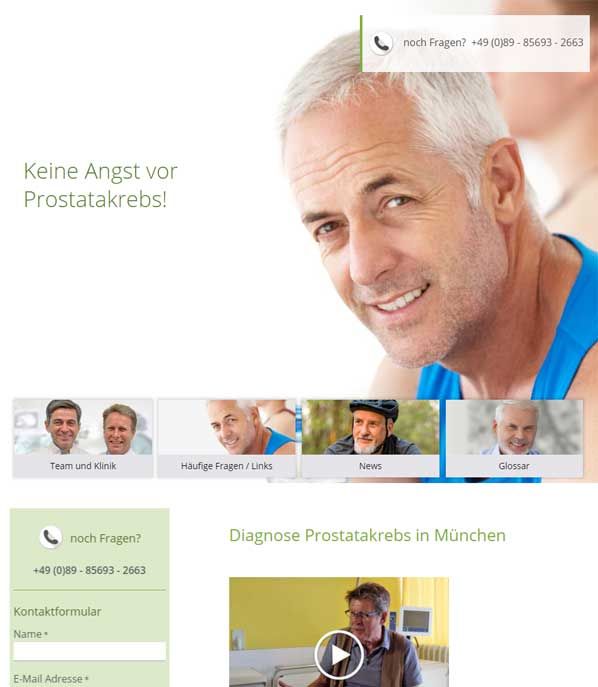Priapism (a persistent, painful erection)
Explanation
Priapism is defined as an erection which lasts for more than 2 hours. It is a rare condition, with an incidence of 1–3 people per 100,000 per year, but should be treated as a urological emergency. Risk factors include rare inherited blood disorders such as sickle cell anaemia (20% of cases) and prostaglandin injections into the erectile tissue for the treatment of erectile dysfunction. Other drugs, including psychotropic drugs, painkillers, drugs for high blood pressure and drugs for treating epilepsy, can also cause priapism, as can recreational drug use. In about 30% of cases, however, the cause remains unclear. This is known as idiopathic priapism.
Diagnosis
The most important point in diagnosing priapism is to distinguish between the two different forms.
High-flow (non-ischaemic) priapism involves an increase in arterial blood flow into the erectile tissue, which is partly counterbalanced by normal outflow via the veins. Because the erectile tissue is still being supplied with blood, this type of priapism is less dangerous and less likely to lead to complications. About 10% of cases of priapism are of the high-flow type.
Conversely, around 90% of cases of priapism are of the low-flow (ischaemic) type. In low-flow priapism, blood is unable to flow out of the erectile tissue, leading to a sustained increase in pressure in the erectile tissue which prevents any further blood flow.
If the condition persists for more than 12 hours, this causes irreversible ischaemic damage to the erectile tissue, with scarring during healing, leading to permanent impotence. Ischaemic priapism therefore represents a serious urological emergency.
Treatment
High-flow priapism is often less painful and the penis less hard, while low-flow priapism is often very painful and the penis harder. Initial treatment involves local anaesthesia in the form of a dorsal penile nerve block. A needle is then inserted into the erectile tissue to take blood to measure oxygen concentration. This enables the doctor to determine whether the patient has ischaemic (low-flow) or non-ischaemic (high-flow) priapism. The cannula used to take blood can then be used to inject adrenaline-like drugs into the penis. (Cardiovascular monitoring should be performed during this procedure.) These drugs restrict blood flow into the penis, thereby improving blood flow out of the penis and generally resolving the priapism. Non-ischaemic priapism resolves spontaneously through the application of local cooling and compression in up to 60% of cases.
In ischaemic (low-flow) priapism, if the above treatment is ineffective or if the patient suffers from recurrent priapism, surgery will be required to create a spongiosum-cavernosum shunt. This involves creating a direct connection between the corpora cavernosa (erectile tissue in the shaft of the penis) and the corpus spongiosum (erectile tissue in the head of the penis).
This procedure can result in permanent erectile dysfunction, but may in some cases be the only treatment option available.







